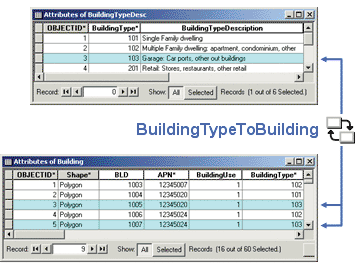
 |
Benefits of relationship classes (ArcInfo and ArcEditor only) |
|
| Release 9.3 |    |
 Relationship classes support all cardinalities—one-to-one, one-to-many, and many-to-many—and may have attributes about the relationship itself.
Relationship classes also provide many advanced capabilities not found in ArcMap joins and relates.
Relationship classes support all cardinalities—one-to-one, one-to-many, and many-to-many—and may have attributes about the relationship itself.
Relationship classes also provide many advanced capabilities not found in ArcMap joins and relates.